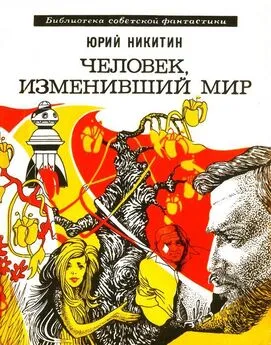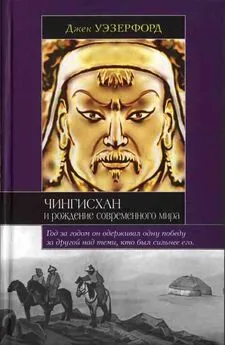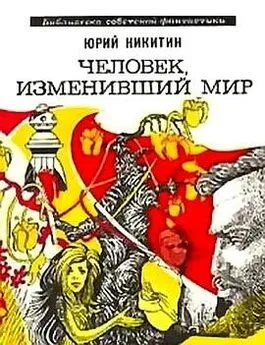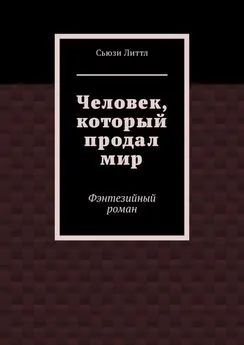Фрэнк Маклинн - Чингисхан. Человек, завоевавший мир
- Название:Чингисхан. Человек, завоевавший мир
- Автор:
- Жанр:
- Издательство:АСТ
- Год:2019
- Город:Москва
- ISBN:978-5-17-095186-4
- Рейтинг:
- Избранное:Добавить в избранное
-
Отзывы:
-
Ваша оценка:
Фрэнк Маклинн - Чингисхан. Человек, завоевавший мир краткое содержание
Чингисхан. Человек, завоевавший мир - читать онлайн бесплатно ознакомительный отрывок
Интервал:
Закладка:
Yule & Cordier, Ser Marco Polo pp. 121–131.
665
Hollyn Conant, 'Genghis Khan's Communications Network,' Military Review 94 (August 1994) pp. 65–77.
666
F. Isono, 'Kuriyen Reconsidered,' Journal of the Anglo-Mongolian Society 12 (1989) рр. 3-25.
667
Riasanovsky, Fundamental Principles p. 83.
668
Moule & Pelliot, Marco Polo I p. 173.
669
Martin, Rise of Chingis Khan p. 17; Jagchid & Hyer, Mongolia's Culture pp. 370–372; T. Allsen, Mongol Imperialism p. 25. For the river crossing see Risch, Carpini p. 17.
670
Dawson, Mongol Mission pp. 33–34.
671
Leo de Hartog, 'The Army of Genghis Khan,' Army Defence Journal 109 (1979) pp. 476–485 (at p. 480).
672
SHO p. 282.
673
Liddell Hart, Great Captains Unveiled p. 28.
674
Dawson, Mongol Mission p. 36.
675
Skelton, Marston & Painter, Vinland Map pp. 88–89.
676
SHO p. 285.
677
Martin, 'Mongol Army' loc. cit.; Gabriel & Boose, Great Battles of Antiquity pp. 545–547.
678
SHO pp. 118–125; SHR pp. 65–72.
679
Skelton, Marston & Painter, Vinland Map pp. 98–99; Risch, Carpini p. 175.
680
Hartog, Army of Genghis Khan,' loc. cit. p. 482.
681
SHO p. 286.
682
The feigned retreat is of course as old as warfare itself. It was used by the Spartans at Thermopylae in 480 ВС to lure Xerxes' Immortals into a trap (Herodotus 8. 24) and by William the Conqueror at the Battle of Hastings in 1066 (see McLynn, 1066 p. 224). As late as 1866 the Sioux chief Red Cloud used it to inflict defeat on the US cavalry in the 'Fetterman Massacre'. For its use in warfare in general see Alexander, How Wars are Won pp. 94–95.
683
For the huge superiority of the Mongol horses see Denis Sinor, 'What is Inner Asia?' in Heissig, Altaica Collecta pp. 245–258 (at p. 251); Sinor, 'Inner Asian Warriors,' Journal of the American Oriental Society 101 (1981) pp. 133–144 (at p. 137). For the special circumstances surrounding the emergence of the Mongol heavy cavalry see V P. Alekseev, 'Some Aspects of the Study of Productive Factors in the Empire of Chingiz Khan,' in Seaman & Marks, Rulers from the Steppe pp. 186–198 (at p. 192).
684
Dawson, Mongol Mission p. 37.
685
As in the relendess pursuit of Shah Muhammad II in 1220–1221 and Bela TV of Hungary in 1241 (see below). Cf also Vernadsky, Mongols and Russia pp. 110–120.
686
RT I p. 204; Vladimirtsov, Genghis p. 65.
687
RT I pp. 204–205; Barthold, Turkestan pp. 361–362; d'Ohsson, Histoire I pp. 104–105.
688
Rachewiltz, In the Service p. 18.
689
Худу — старший сын Тохтоа-беки («Сокровенное сказание», § 198). — Прим. пер .
690
RT I pp. 226–227.
691
Barthold, Turkestan pp. 401–402.
692
For a general survey of the Forest Peoples see Rachewiltz, Commentary pp. 852–854. For the Buriyat see West, Encyclopedia pp. 132–133 and Matthiessen, Baikal. For the Oyirad see RT I pp. 54–57; Rachewiltz, Commentary p. 852. For the Turned see RT I p. 58. For the Tuvans see Krueger, Tuvan Manual; M. N. Mongush, 'Tuvans of Mongolia and China,' International Journal of Central Asian Studies 1 (1996) pp. 225–243; Lattimore, Mongols of Manchuria p. 165; Bowles, The People of Asia pp. 278–279.
693
Название североамериканского оленя. — Прим. пер .
694
Vladimirtsov, Le regime social op. cit. pp. 41, 61.
695
RT I p. 59.
696
SHC p. 7.
697
SHO pp. 115–117; SHR pp. 62–65.
698
RT I p. 204; Martin, Rise of Chingis Khan p. 102.
699
Rachewiltz, Commentary p. 852.
700
SHC p. 173; Pelliot, Notes sur l'histoire de la Horde d'Or pp. 141–142.
701
Rachewiltz, Commentary p. 854. For the Mongol mania for gyrfalcons see Hambis, Marco Polo p. 426.
702
Rachewiltz, Commentary p. 851. For Qorchi's appointment to this position at the 1206 quriltai see SHO pp. 196–197; SHR pp. 138–139.
703
SHO p. 224; SHR p. 166.
704
Ratchnevsky, Genghis Khan pp. 117–118, 254–255.
705
RT I p. 227.
706
SHW p. 311; SHO p. 223; SHR p. 165.
707
For this ride see Carruthers, Unknown Mongolia I pp. 114–115.
708
Большой Енисей. — Прим. пер .
709
Donner, Siberie p. 132.
710
d'Ohsson, Histoire I p. 157.
711
Мастерский маневр, ход, прием ( фр .).
712
SHO p. 224; SHR pp. 165–166.
713
SHW p. 312.
714
Pelliot, Notes critiques d'histoire Kalmouke I pp. 55–64; R D. Buell, 'Early Mongol Expansion in Western Siberia and Turkestan (1207–1219): A Reconstruction,' Central Asiatic Journal 36 (1992) pp. 1–32 opts for a different chronology for these events.
715
Colin Mackerras, Uighur Empire.
716
Golden, Turkic Peoples pp. 176–183; Barfield, Perilous Frontier pp. 165–169.
717
Beshbaliq (Jimsar) is located at 43° 59' N, 89° 4' E; Asimov & Bosworth, History of Civilizations iv part 2 p. 578; Beckwith, Empires of the Silk Road pp. 148, 159; Pelliot & Hambis, Campagnes pp. 82–95.
718
Barthold, Turkestan pp. 48–52; B. Spuler, History of the Mongols (1972) pp. 31, 176; Colin Mackerras, 'The Uighurs,' in Sinor, Cambridge History pp. 317–342.
719
Brose, Subjects and Masters pp. 88–89.
720
JB I pp. 53–61; Yule, Cathay and the Way Thither I p. 209; d'Ohsson, Histoire I pp. 429–435.
721
«Сокровенное сказание», § 238. — Прим. пер .
Bretschneider, Mediaeval Researches I p. 260.
722
Brose, Subjects and Masters pp. 86–87.
723
JB I pp. 44–47; SHO pp. 221–222; SHR p. 163; Thomas T. Allsen, 'The Yuan Dynasty and the Uighurs of Turfan in the Thirteenth Century,' in Rossabi, China among Equals pp. 248–280 (at pp. 246–248); d'Ohsson, Histoire I p. 419.
724
JB I pp. 46–47; Allsen, 'The Yuan Dynasty,' loc. cit. p. 247.
725
JB I p. 140.
726
Rachewiltz, Commentary pp. 848–849; Jackson & Morgan, Rubruck pp. 283–284; Pelliot, Recherches pp. 667–67. Bretschneider ties himself in knots on this issue, absurdly claiming that Altalun died before she could marry the idiqut, that Genghis substituted another daughter but that Barchuq then died before he could marry her (Bretschneider, Mediaeval Researches I p. 261); JB I p. 175; Weatherford, Secret History of the Mongol Queens pp. 47, 51, 57, 69–72, 79–80, 91, 97, 102.
727
Brose, Subjects and Masters pp. 50–54.
728
Brose, Subjects and Masters pp. 259, 264–265. For the Uighur script see J. Richard, 'La limite occidentale de l'expansion de l'alphabet Ouighour,' Journal Asiatique 239 (1951) pp. 71–75. For their culture in general see Hamilton, Les Ouighurs.
729
SHO p. 221; SHR p. 162; Rachewiltz, Commentary p. 843; Biran, Qara Khitaip. 75.
730
The fundamental work on the Tanguts is Dunnell, Great State of White and High, but there is also much valuable work in learned articles and theses: Mary Ferenczy, 'The Foundation of Tangut Statehood as seen by Chinese Historiographers,' in Ligeti, Tibetan and Buddhist Studies I pp. 241–249; Dunnell, 'Who are the Tanguts? Remarks on Tangut Ethnogenesis and the Ethnonym Tangut,' Journal of Asian History 18 (1984) pp. 778–789; Paul Friedland, A Reconstruction of Early Tangut History,' Ph.D. thesis, University of Washington 1969. See also Kwanten & Hesse, Tangut… Studies; Asimov & Bosworth, History of Civilizations, iv part 1 pp. 206–214.
731
Mote, Imperial China pp. 257–259.
732
Franke & Twitchett, Cambridge History pp. 155–157, 162, 165, 168–170, 196.
733
Ksenia Kepping, 'The Name of the Tangut Empire,' T'oung Pao 80 (1994) pp. 357–376; Beckwith, Silk Road p. 31; Gerard Clauson, 'The Future of Tangut (Hsi Hsia) Studies,' Asia Major 11 (1964) pp. 54–77.
734
Franke & Twitchett, Cambridge History pp. 123–153; Mote, Imperial China pp. 257–259; Gumilev, Imaginary Kingdom pp. 98–100, 593.
735
Mote, Imperial China pp. 261–264; Solonin, Tangut Chan Buddhism.
736
У автора Чун-цзун (Ch'ung-Tsung). — Прим. пер .
737
Biran, Qara Khitai p. 64; Franke & Twitchett, Cambridge History pp. 155, 197.
738
H. D. Martin, 'The Mongol Wars with Hsi Hsia, 1205–1227,' Journal of the Royal Asiatic Society (1942) pp. 195–228 (at pp. 198–199).
739
RT I p. 204.
740
For details of the Tangut army see Stein, Tibetan Civilization pp. 70–77.
741
G. Jenkins, A Note on Climatic Cycles and the Rise of Genghis Khan,' Central Asiatic Journal (1974) pp. 217–226.
742
Togan, Flexibility p. 70; Franke & Twitchett, Cambridge History pp. 164, 206; Asimov & Bosworth, History of Civilizations iv part 1 p. 213.
743
Mote, Imperial China p. 254; Franke & Twitchett, Cambridge History p. 157.
744
Mote, Imperial China p. 254; Franke & Twitchett, Cambridge History p. 183.
745
RT I p. 204.
746
Franke & Twitchett, Cambridge History p. 205.
747
Atwood, Encyclopedia p. 590; Ruth W Dunnell, 'The Fall of the XIa Empire: Sino-Steppe Relations in the Late Twelfth to Early Thirteenth Centuries,' in Seaman & Marks, Rulers from the Steppe pp. 158–183.
748
Другие написания — Валахай (Уйрака). — Прим. пер .
Читать дальшеИнтервал:
Закладка:
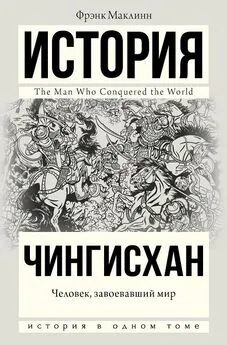

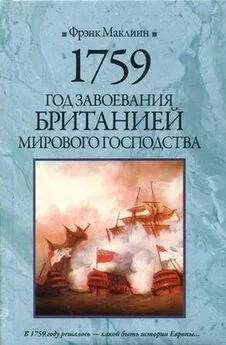
![Ксения Чепикова - Человек, научивший мир читать [История Великой информационной революции]](/books/1059757/kseniya-chepikova-chelovek-nauchivshij-mir-chitat-ist.webp)
